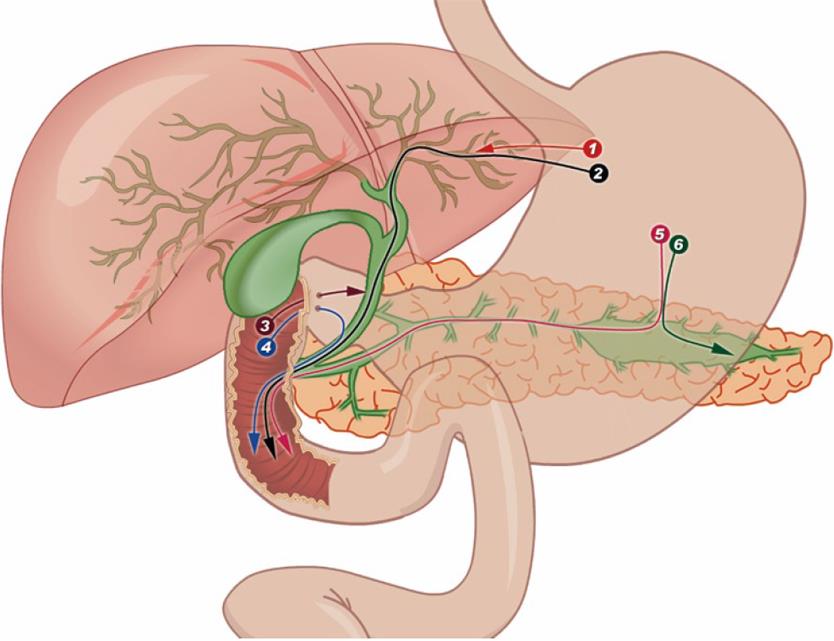Copyright
©2010 Baishideng.
World J Gastrointest Endosc. Jun 16, 2010; 2(6): 212-222
Published online Jun 16, 2010. doi: 10.4253/wjge.v2.i6.212
Published online Jun 16, 2010. doi: 10.4253/wjge.v2.i6.212
Figure 1 The three potential ESCP access routes: intrahepatic (1, 2), extrahepatic (3, 4) and pancreatic (5, 6).
After ductal access through any of them, drainage can be accomplished transmurally over an intraductal guidewire (1, 3, 6) via hepaticogastrostomy (1), choledochoduodenostomy (3) or pancreaticogastrostomy (6). Transpapillary guidewire placement (2, 4, 5) allows both retrograde access via rendezvous ERCP and antegrade stent placement for biliary (2, 4) or pancreatic duct drainage (5). Rendezvous requires an accessible papilla and is preferable in benign disease. Antegrade transpapillary ESCP suits complex postoperative anatomy, particularly when performed for palliation of malignant obstruction.
- Citation: Perez-Miranda M, Serna CL, Diez-Redondo P, Vila JJ. Endosonography-guided cholangiopancreatography as a salvage drainage procedure for obstructed biliary and pancreatic ducts. World J Gastrointest Endosc 2010; 2(6): 212-222
- URL: https://www.wjgnet.com/1948-5190/full/v2/i6/212.htm
- DOI: https://dx.doi.org/10.4253/wjge.v2.i6.212









